#erodium fruit
Text
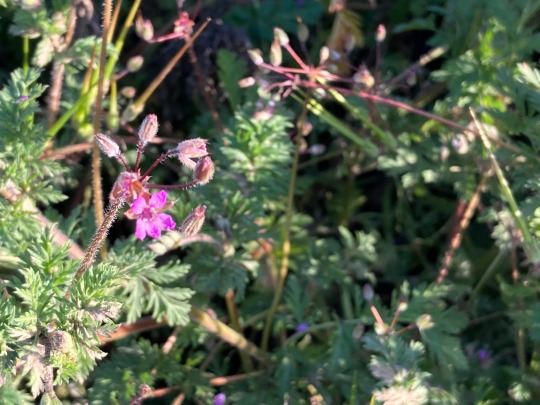

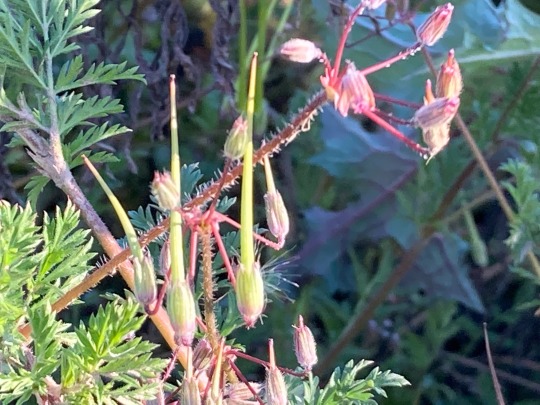
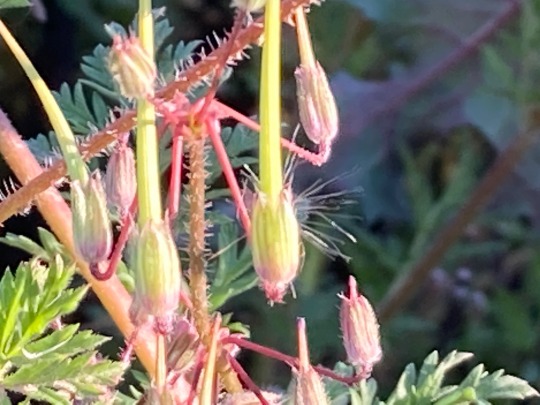
#redstem stork's bill#stork's bill#filaree#erodium cicutarium#erodium fruit#microflora#wildflowers#weeds#sepulveda basin wildlife preserve#van nuys
3 notes
·
View notes
Text
Predatory Bananas: an Evolutionary Horror
(Pls read, I literally spent HOURS on this <3)
A friend sent me the following video about the various potential methods of banana locomotion. It got me thinking. How would a banana move? Naturally, as an autist with a special interest in evolutionary biology, I took the joke a little too far and wrote a whole piece on the matter, analyzing the feasibility of each method and the changes they’d need to evolve in order to achieve them.
(Video courtesy of Burning Onion Animation on TikTok, they make great content, go check them out)
The first and most likely way bananas would move is if banana trees evolved to spread their seeds through their fruits rolling down hills like the morphology of #1 suggests. The only major mutations that need to happen are a more pronounced curve and increased rigidity to facilitate rolling and absorb the impact from falling from the tree. Overall, evolving to this point is relatively straightforward. #1 is the most feasible and realistic answer.
For bananas to develop motility like in #4 is theoretically possible with the right environmental pressures and with enough time, though much more difficult. I see this working in one of two ways. First, they could evolve rigid structures that change shape depending on moisture content, using natural dry/wet cycles to move a little more each time it rains, much like the seeds of Erodium Cicutarium (pictured below). The fruits of the banana tree would most likely evolve to have hooks on the end of said structures, contracting and pulling themselves forward a little each time they dry out, and relaxing and resetting their grip on the soil each time they get wet.
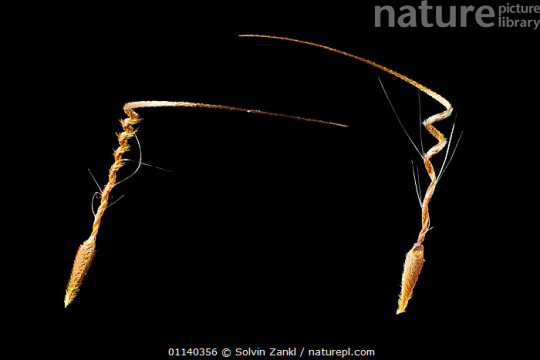
The second way I could see this happening is if they evolved true locomotion. True locomotion in bananas would take at least a few million years to evolve (probably more like tens of millions), and even then, movement would be incredibly slow. There exists a plant called the “walking palm” (socratea exorrhiza, pictured below) that’s capable of “walking” using its roots, but it can only travel about 20 meters per year in ideal conditions, and has the resources of the entire tree at its disposal, not just that of a single fruit.
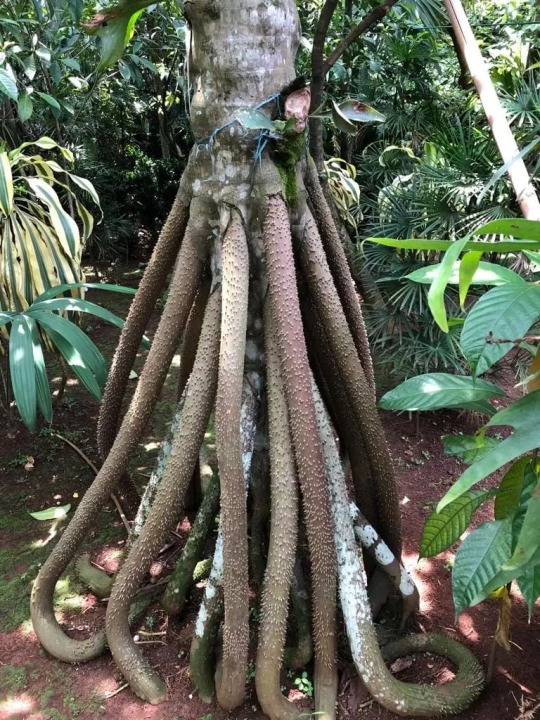
While this is the more likely explanation as to how #4 might happen, it’s not what the video depicts. The video clearly shows a banana dragging itself along like an inchworm, indicating motor cells such as those present in Dionaea Muscipula (venus flytrap, pictured below). Whenever this type of movement in plants occurs, it takes an extreme amount of energy and is generally rather inefficient and slow. In addition to this, the banana is moving its entire mass every time, so it’ll have to move much more slowly to compensate. This means that the banana would probably only be able to travel a few centimeters before decomposing beyond the point of functionality. After a few million more years it’s possible that bananas could evolve to travel as far as several meters after falling off the tree, but the further they go, the more fit each individual fruit needs to be, and the more energy and resources they need. Eventually, it’ll reach a point where the energy expenditure will outweigh the benefit and the fruits will stop evolving to travel any further, which I imagine would plateau somewhere in the 0.5 to 3 meter range. However, the fruits still require a significantly higher amount of energy at this point because they’ve evolved to move autonomously, so trees would likely evolve to produce fewer, but more developed fruits as a result. Overall this is the second most likely way bananas would evolve to move, but the video depicts a time lapse, not footage taken in real time.
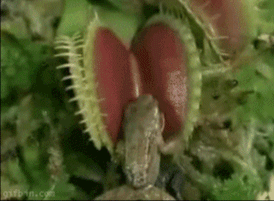
The next most likely option is #2, which is where things start to get much more interesting. At this point we are quickly beginning to leave the territory of the banana being a fruit and stepping closer towards the realm of the banana being its own independent organism. Whether the banana is still a single fruit from a larger tree depends on if the video is stabilized or not. First, let’s assume that the video has automatically stabilized the banana within the frame. This means that the banana is moving erratically and aimlessly, with the goal of simply moving as far from its origin as it can. The most simple form of this would be a ballistic dispersal method in which the banana grows curved and under tension, falling off the tree when ripe. Upon impact, the tension is released and banana extends, springing itself upward and outward with a single bounce. But this isn’t what the video shows either, it depicts clear and repeated movement, again suggesting the presence of motor cells much like those likely found in banana #4. In this case it probably evolved in roughly the same way as banana #4, but works less effectively due to having a less stable method of traveling.
But what if the video ISN’T stabilized, and the banana’s staying upright all on its own? In the video, the banana isn’t just moving along a single plane with one set of motor cells like the Venus flytrap. It’s full on galloping. This requires multiple groups of motor cells working together in a coordinated effort. This banana has real-time sensory input to orient and stabilize itself. This means that the banana has evolved some sort of internal gyroscope, much like our inner ear that helps it determine what up and down is, and more importantly, angular rotation. While plants have been observed reacting to and even predicting stimuli in ways that still baffle scientists to this day, this is far more complex than any plant every discovered throughout human history. Everything here points to something more, perhaps rudimentary intelligence, dare I even say sentience.
This begs the question: is it even a plant anymore? At this stage it’s evolved sensory organs and can move independently. But why? Organisms don’t evolve the ability to move without reason. This could mean one of three things. First, it could have evolved the ability to run as a means of spreading its seeds further. But this can’t be the answer. Moving more slowly would be way more efficient for a banana in terms of energy expenditure, and spreading seeds the old fashioned way is still perfectly viable, so it wouldn’t have evolved that way due to lack of necessity. This brings us to the first legitimate possibility: the banana is prey. If the banana were prey, then the ability to gallop most likely evolved as a means of escaping predators and to avoid being eaten. This is further evidence that the banana has evolved beyond being a humble plant as this goes completely against the purpose of fruits, which evolved to be eaten on purpose. Now, the banana’s goal isn’t to be eaten so that its seeds may be deposited elsewhere, its primary objective is to survive. At this point it’s relatively safe to assume that the banana no longer comes from a tree, and now reproduces through fragmentation, or perhaps even live birth. Its lack of leaves suggest that it’s evolved beyond being an autotroph and relying on photosynthesis. But if it no longer gets nutrients from a tree, how does it subsist? It must be getting its energy from somewhere. The most likely answer to this is that banana is a herbivore, and gets its energy from plant matter, which contains a lot of the same nutrients that the banana recently used to get by growing on a tree. Overall, this is the third most likely way the banana would evolve locomotion.
But what if it isn’t an herbivore? This brings us to the other possibility: the banana is a predator. The banana that concerns me the most is banana #3. While all the other bananas have undergone major changes to their morphology, banana #3 appears to be identical to any regular banana, yet it still moves. The only way that such movement could be possible is if the banana had some sort of internal mechanism that moves its center of mass around rather quickly within its outer shell, which also requires an internal gyroscope for balance. I know what you’re thinking; “but this is an incredibly complex mechanism, wouldn’t it be easier to evolve one of the other ways?” To which the answer is yes, it would. But this raises another question with an even more alarming answer: why didn’t it? The answer lies in the banana’s identical appearance to that of a typical Cavendish. Clearly, looking like an ordinary banana is central to its survival strategy. At this point, it’s evolved well past the point of being a fruit and has become the first of an entirely new kingdom of sentient creatures descended from plants.
According to my estimates from the video, banana #3 is only able to move at a pace of around a tenth of a meter per second, maybe a quarter or half of a meter at the most. This means that it probably didn’t evolve the ability to move as a means of running from predators. Based on the physics in the video, my best guess as to how the banana moves is through the use of mostly hollow internal chambers with a central mass (probably a calcified seed) suspended by tendons that can move in any direction, accelerating the banana in that direction. Here I’ve collaborated with the massively talented @pholidia to bring my ideas to light.

Picture it. You’re a lone banana farmer in South America. You’re out harvesting your crops when you see a single banana on the ground. It looks a little weird and bruised, but still totally edible. “No good in letting perfectly good produce go to waste” you think to yourself as you pick up the banana. You go to peel it when suddenly, you feel a sharp shooting pain through your hand. You drop the banana, then fall to your knees. You look around for the wasp or whatever it was that stung you, but you can’t find anything. You collapse in a heap on the ground, unable to control your body. It’s at this point you notice the banana start to move. “Are… are those teeth?” you think to yourself. At this point the venom has taken full effect. You are alone and completely paralyzed, unable to do anything besides observe the banana as it starts moving towards you. Sharp teeth and beady black eyes are fully visible now. It ambles towards you clumsily, moving almost as if it were being controlled by invisible strings like a marionette. It reaches you and starts to chew. It is at this moment that you discover, much to your horror, that the venom is merely a paralytic, and not an anesthetic. Helpless to the venom, you can do nothing but watch as your blood slowly drains out onto the ground as the creature consumes you. Slowly, your vision begins to fade to black. You pass out, either from the pain or the blood loss, you’re not really too sure. You take one last look at the creature, then you’re gone forever.
#biology#evolutionary biology#evolution#bananas#plants#darwin#science#botany#banana#r/196#196#r/196archive#/r/196#rule#meme#memes#shitpost#shitposting#autism#stem#cool#funny#plant#cooking#trees#fruit#unreality#joke#funny shit#funny post
209 notes
·
View notes
Text
Erodiums
Alright, usually I go hard on the narrative opportunities of these prompts, but this time I’m just going to tell you true facts about our world. Erodiums are incredibly invasive plants in California, dangerous due to their ability to outcompete native plants. They, more interestingly, have fruit with long stalks (left picture). When the fruit detach from their stems, the stalks begin to spiral (right picture), I believe because they dry out. The result of this is these neat corkscrew seeds that bury themselves in the ground. They’re also incredibly sticky; you’ll often find a bunch of these seeds stuck to your pants after hiking through grass. If you do and you’re in the US, crush them up or keep them yourselves so they don’t stay in the environment.
Pictures under the read more


Picture credits
Picture one: Krzysztof Ziarnek, Kenraiz
Picture two: Harry Rose
#An erodium is a kind of flower#botany#plants#invasive species#naturalism#my writing#library of babel#unedited
0 notes
Text



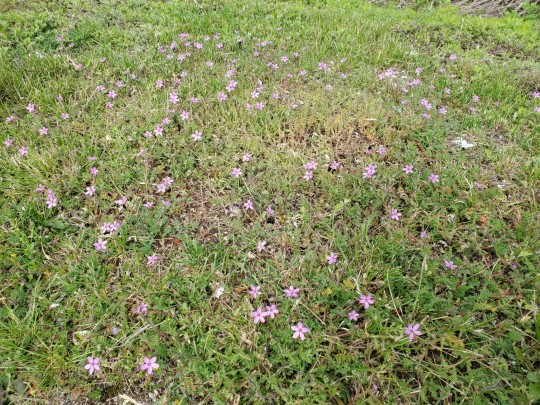
Redstem Stork's bill (flowering & fruiting), Erodium cicutarium
1 note
·
View note
Photo
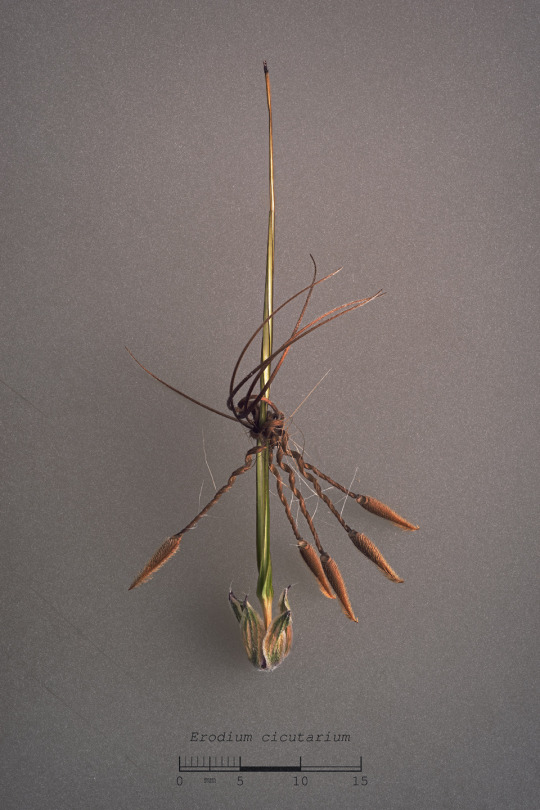
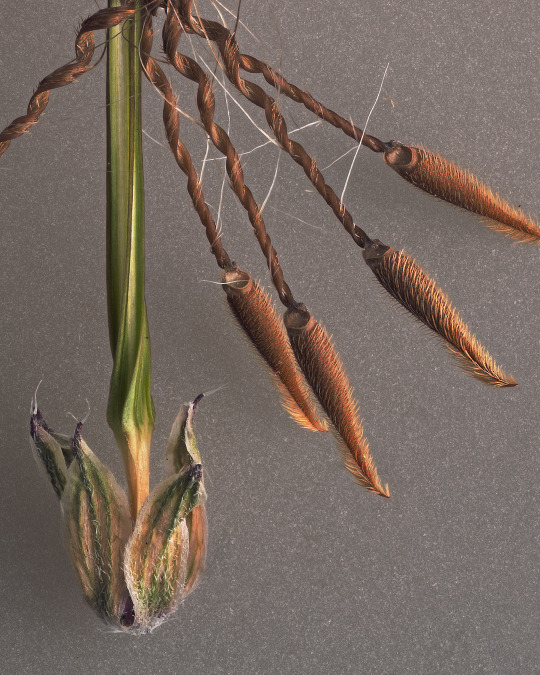

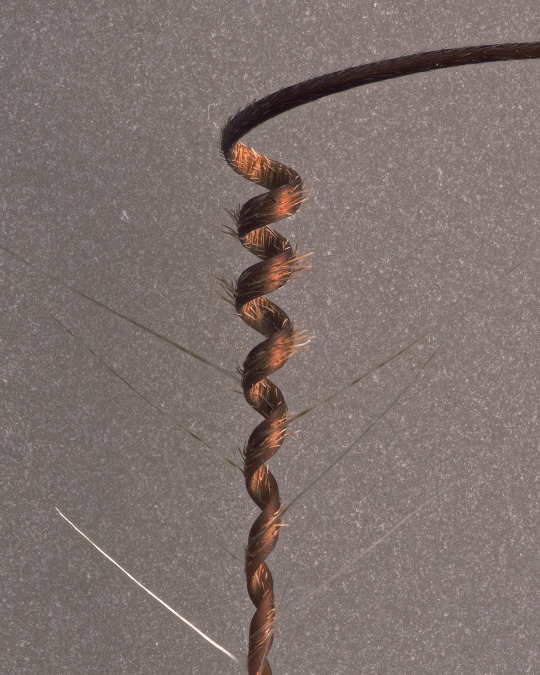
Originating in temperate regions of Eurasia and Africa, Erodium cicutarium, the common stork-bill has become naturalized and often invasive throughout the world. Despite the fact that California does have a native species of Erodium (Erodium texanum), I have almost never seen any other than cicutarium growing. While being annoyingly widespread and persistent, it still holds charm for me due to the magic of its seeds. I remember learning as a kid that if you got one of the fruits at just the right moment of dryness, a tiny twist or flick would set the seeds to exploding off or violently twisting up around the main stem. This moisture-driven characteristic is responsible not just for seed dispersal, but also for screwing the seed into soil as the tail finds purchase on the ground. To further add to its ability to spread, each seed is covered with stiff bristles which allow it to hitch a ride on fabric or fur, and when a lot of animals eat the plant, foliage and fruit, that’s a lot of conveyance. Sadly, this introduced species outcompetes many native plants in the same community which drives down biodiversity and even detrimentally impacts forage which causes economic ramifications. Even more unfortunately, this plant loves to be caught on fire, and can be challenging to pull one let alone thousands, which leaves only chemical options which can cause collateral damage across the environment.
#erodium#twisty#details#texture#seed#fruit#invasive#species#botany#herbarium#botanical#nature#photography
80 notes
·
View notes
Photo
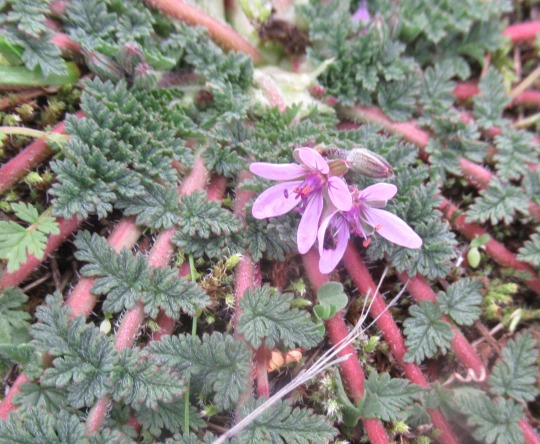
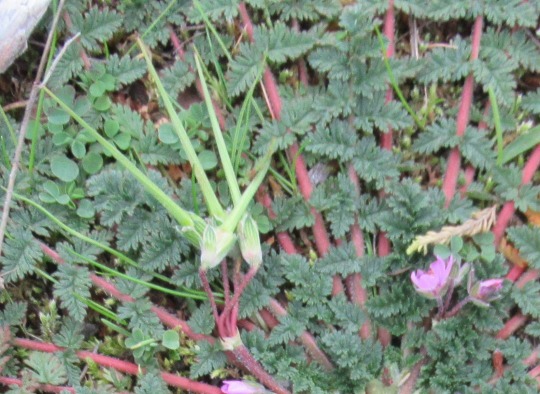
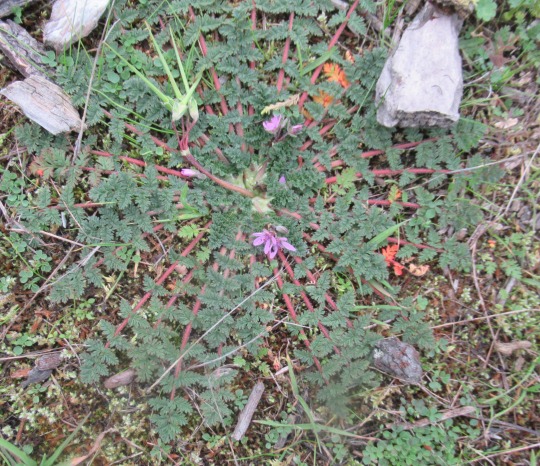
Erodium cicutarium (Common Stork’s Bill, Redstem filaree, pin weed)
A Common Stork’s Bill showing off it’s lovely radial leaf pattern down at Crescent Beach. This Mediterranean species was first brought to North America by Spanish missionaries sometime before 1769, probably by way of livestock imported from Baja California in Mexico. The common name filaree is derived from the Spanish diminutive of alfiler, a modification of the Arabic al-khilāl (the thorn, the pin). These terms refer to it’s seeds.
Thanks to it’s long-persistent styles, the fruits resemble a stork’s bill. As the fruits dry, they split lengthwise into five sharp-pointed segments. The slender style becomes spirally twisted as it dries but it straightens out again when wet. With alternate moisture and dryness this uncoiling, squirming action drives the seed into the ground. It can also disperse explosively throwing the seeds away from the mother plant.
#flowers#photographers on tumblr#Common Stork's Bill#wildflowers#invasive plants#fleurs#flores#fiori#blumen#bloemen#Vancouver
74 notes
·
View notes
Photo

Common Stork’s-bill, Erodium cicutarium (Geraniaceae). 🌸 ... This species is a common weed introduced from Eurasia. The genus name comes from the Greek erodios, meaning heron, which is a reference to its long-beaked fruits. ... #erodiumcicutarium #geraniaceae #storksbill #plants #weeds #flowers #wildflowers #botany #plantidentification #plantid (at Seattle, Washington) https://www.instagram.com/pnw_botany/p/BwxR3eNF2Hf/?utm_source=ig_tumblr_share&igshid=1hv4e6ww7l2pt
#erodiumcicutarium#geraniaceae#storksbill#plants#weeds#flowers#wildflowers#botany#plantidentification#plantid
21 notes
·
View notes
Text
Les bienfaits d’Erodium glaucophyllum …
Erodium glaucophyllum est une plante halophyte d’environ 40 cm de haut ; ses tiges florales dressées qui portent des fleurs mauve pâle, les feuilles triangulaires en rosette dense, légèrement découpées, d’une couleur vert-gris, glauque.les fruits de 6 à 12cm. de la famille des Géraniacées. La plante pousse des regs sablo-limoneux ; présent en sud d’Algérie (chott el Hodna) M’sila et en…
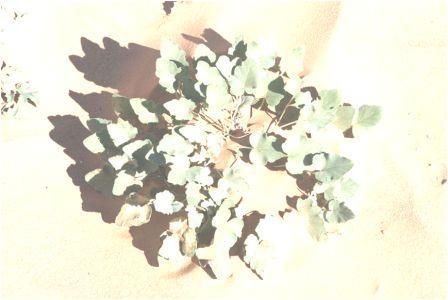
View On WordPress
0 notes
Text




3 notes
·
View notes
Text
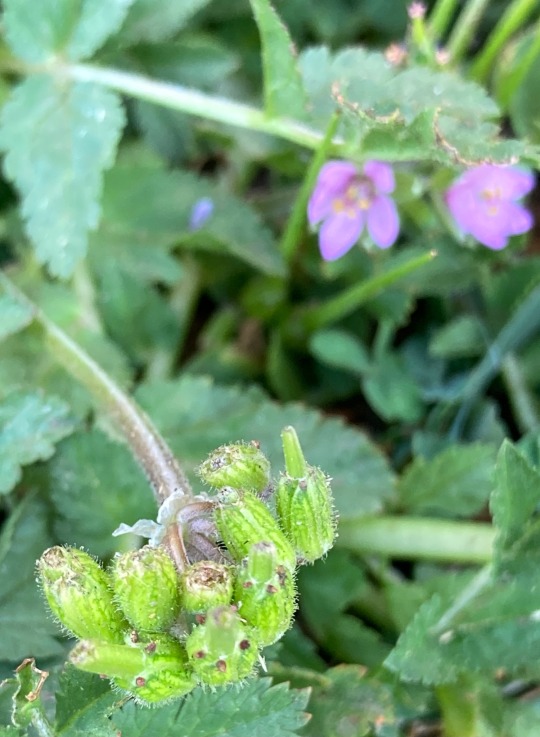
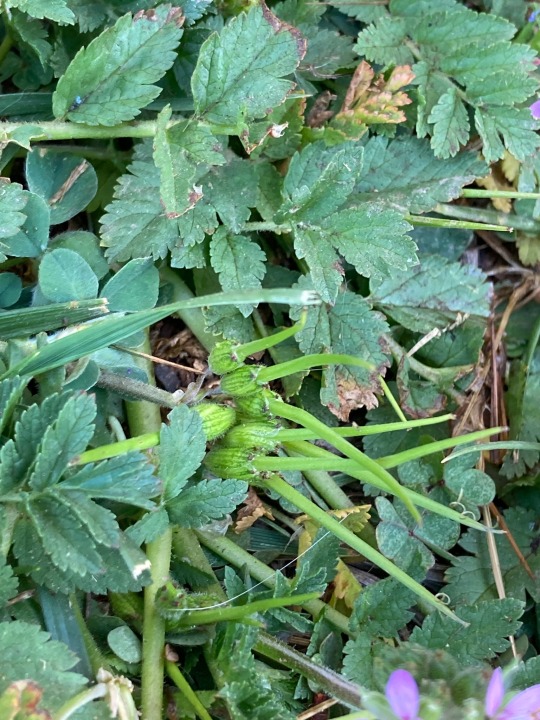
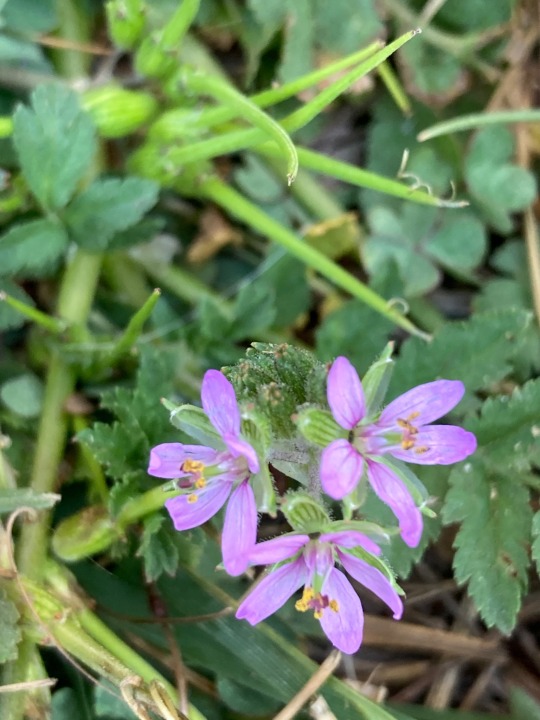
3 notes
·
View notes
Photo


3 notes
·
View notes
Text
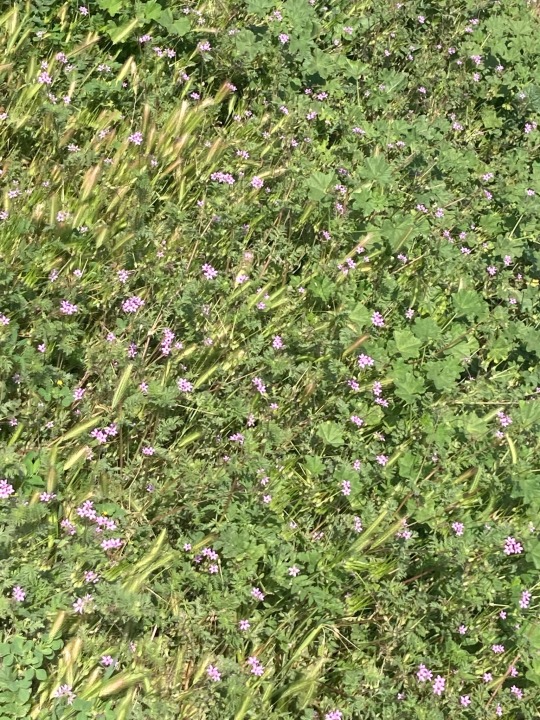

1 note
·
View note
Photo
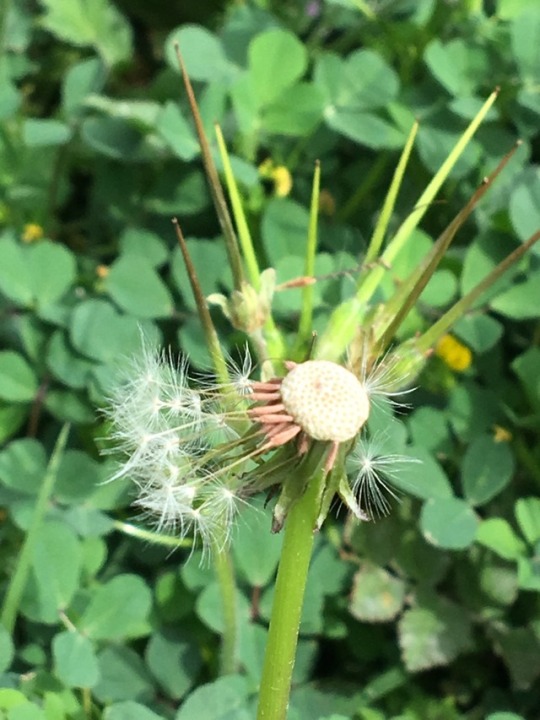

13 notes
·
View notes
Photo
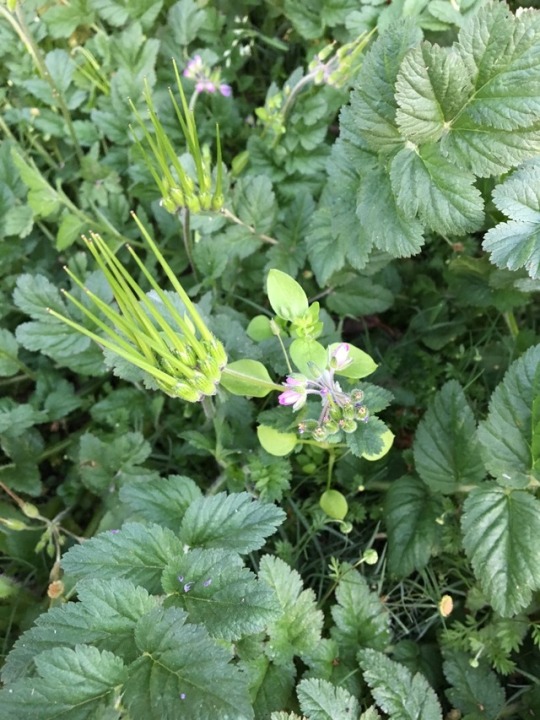

1 note
·
View note
Photo
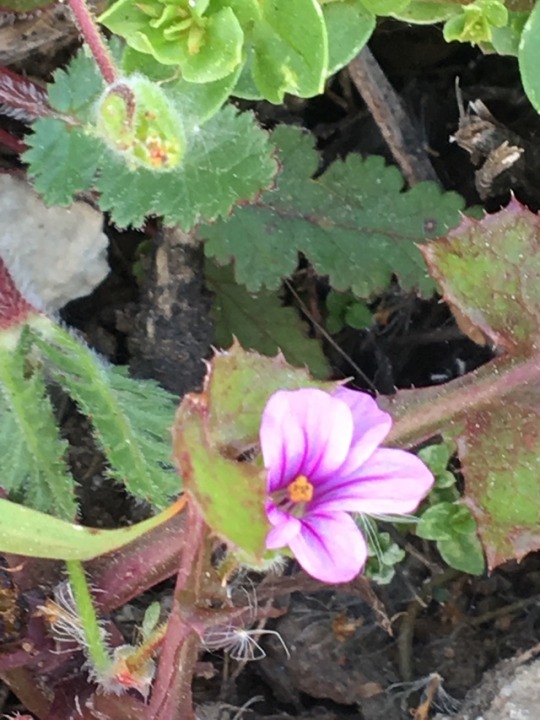
#short fruit storksbill#white stemmed filaree#erodium brachycarpum#microflora#wildflowers#ballona wetlands ecological reserve#marina del rey
2 notes
·
View notes
Photo
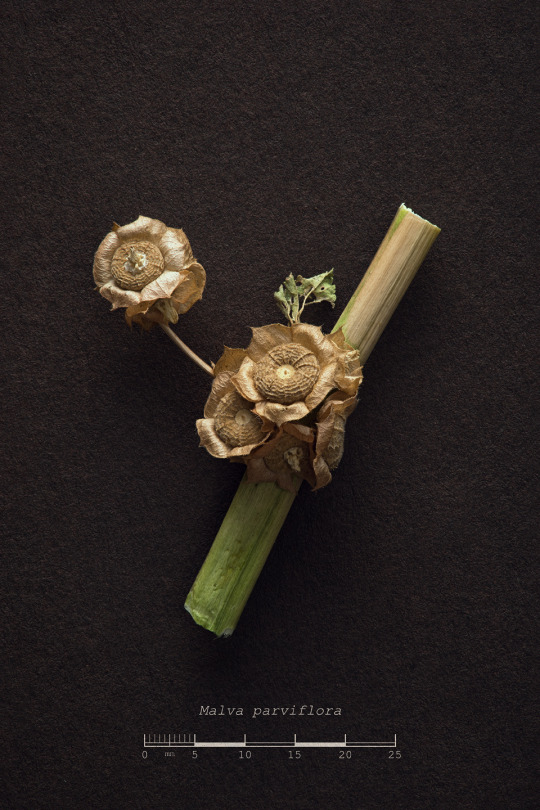

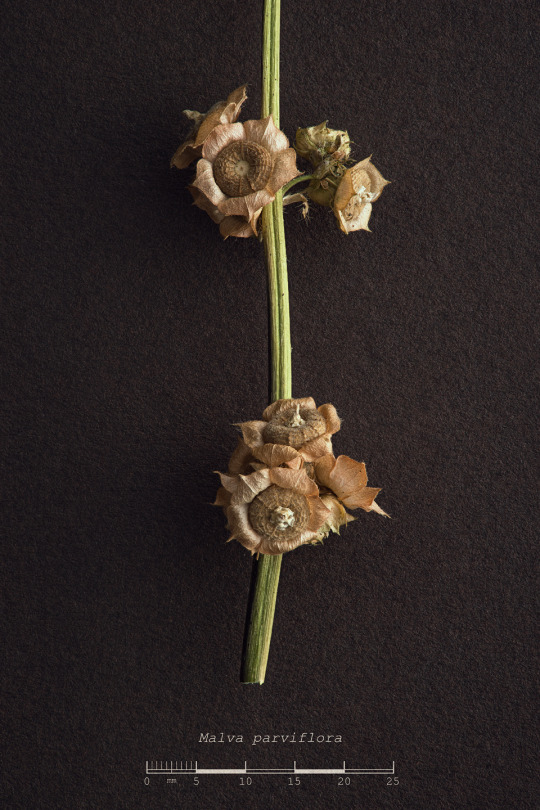

Malva parviflora, the cheeseweed mallow, is a weed from the mallow family (Malvaceae) which originates from Africa, Europe, and Asia, much like the Erodium I previously posted. It is naturalized throughout the world and where I live in California it can be commonly seen in yards, growing in cracks, fallow bits of exposed soil in industrial areas, or in roadside parking strips. Though diminutive, the flowers clearly resemble others in the family such as the hibiscuses, cottons, and the hollyhocks. This weed can be challenging to distinguish between related species, particularly due to the variable growth habit, but the fruit/seeds are a good diagnostic since Malva parviflora has a wrinkled schizocarp (a categorization of fruit with dry, fused carpels) while the most similar relative, Malva neglecta, possesses a smooth fruit.
Yet again I am presenting an invasive species which can have deleterious effects on both native plants and agriculture because it can harbor certain plant viruses and pests, competes for limited resources, and interferes with crop development and harvesting.
53 notes
·
View notes